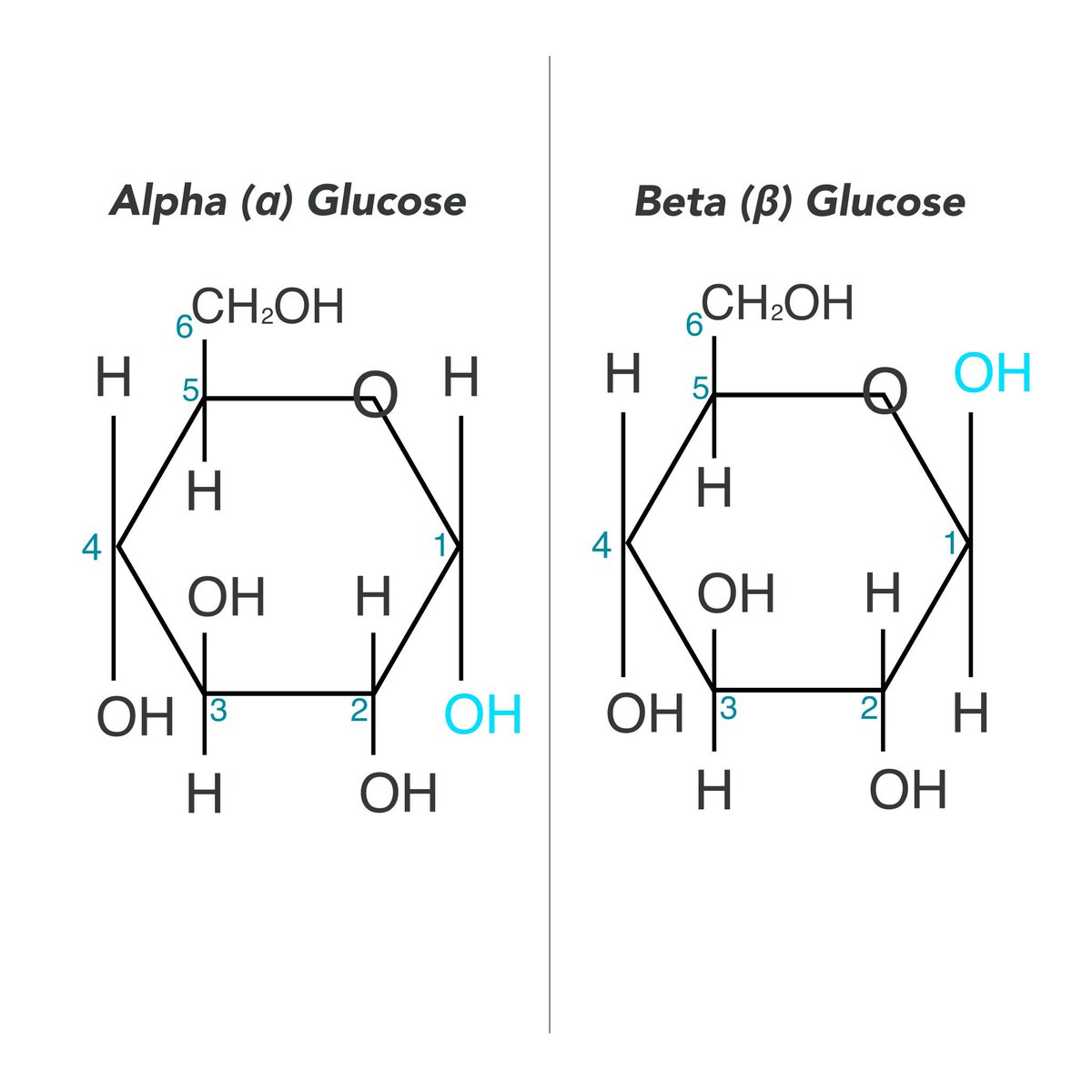1 Structures of Carbohydrates
Each carbohydrate could be a monomer (6 carbons, simple structure). A carbohydrate monomer (simple sugar) is called a "monosacharide"
- Two monomers could be chained to build a more complicated structure named Disachoride
- Monomers could be chained to build "polymers"
- Complicated polymers is what forms the energy builds of life
- The same atoms, with different bonds and hence a different species, result in "isomers"
General chemical formula: \(C_n H_{2n} O\)
- Monosacharride => a monomer of carbohydrates
- Disachoride => a dinomer (?) of carbohydrates
- Polysachride => a polymer of carbohydrates
1.1 Basic Monomers
- Glucose: ring of 6 carbons
- Fructose: ring of 5 carbons
1.2 The mer-library
| Name | Note | Composition |
|---|---|---|
| Sucrose | Common Sugar | Disachoride: Glucose + Fructose |
| Lactose | The thing that's in milk | Disachoride: Glucose + Galactose |
| Cellose | Plants' cell wall we can't digest | Polysacharides from: beta-Glucose |
| Glucose | Bulding block of sugar | Monomer |
| Galactose | Sugar sweeter than sugar | Monomer |
| Fructose | Controvercial | Monomer |
| Starch | Plant food reserve | Small, branched alpha glucose |
| Glycogen | ANimal energy reserve | Lots of alpha glucose in more branches |
1.3 Making and Breaking -mers
Creating a polymer ("dehydration")
- Take monomers
- Remove water molecules
- Fill the now-gaping hole with the next monomers
Breaking a polymer ("rehydration")
- Take polymers
- Add water
- Get Glucose
- Profit!
Hence, you get thirsty after around 45mins whenever you eat lots of sugar — ye gotta get that water to rehydrate and break down those polymers.
Bonds are called "glycocidic" bonds
1.4 Alpha vs Beta glucose

Figure 1: CrLHc0-WEAAe12C.jpg
And now, a note on energy.
You could add even more monosachrides/disacharides up to get polysacharides (starch, fiber, glycogen)
- We get energy for lots of glucose (the alpha variant of which's polysacharide is starch), but we can't get any from cellulose (whose polysacratide is fiber)
- We eat fiber to maintain gut health + poop goodly. Cellulose is hydrophillic, meaning that fiber makes your guts lubricated.
- Polysaccharides linked together by glycosidic bonds.
NOTE! Whichever carbohydrates you are using, you get energy from breaking its bonds.